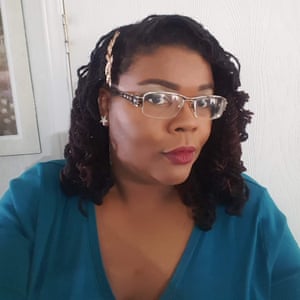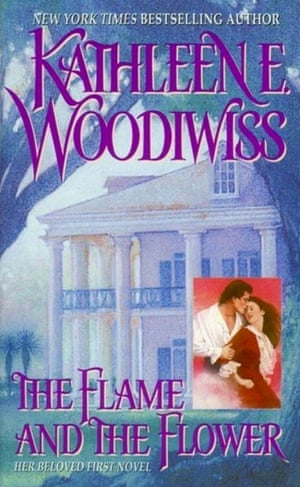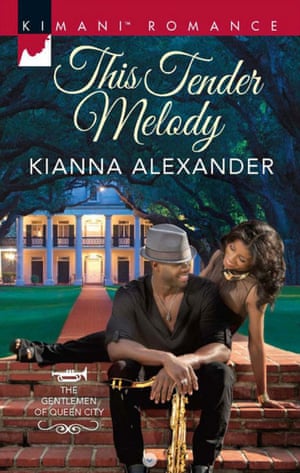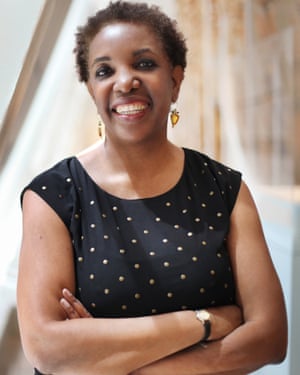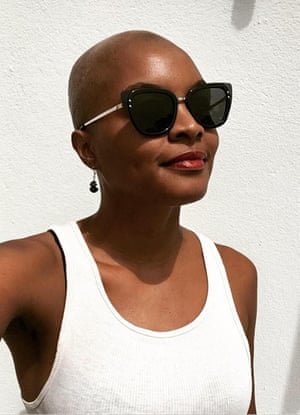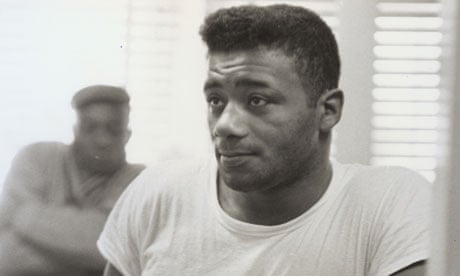The mangrove-fringed coast of Guyana, at the north-eastern tip of South America, does not immediately bring to mind the Highlands of Scotland, in the northernmost part of Great Britain. Guyana’s mudflats and silty brown coastal water have little in common with the lush green mountains and glens of the Highlands. If these landscapes share anything, it is their remoteness – one on the edge of a former empire burnished by the relentless equatorial sun and one on the edge of Europe whipped mercilessly by the Atlantic winds.
But look closer and the links are there: Alness, Ankerville, Belladrum, Borlum, Cromarty, Culcairn, Dingwall, Dunrobin, Fyrish, Glastullich, Inverness, Kintail, Kintyre, Rosehall, Tain, Tarlogie, a join-the-dots list of placenames (30 in all) south of Guyana’s capital Georgetown that hint of a hidden association with the Scottish Highlands some 5,000 miles away.
As a child, I knew little of my parents’ country Guyana. I knew that it was part of the British West Indies and the only English-speaking country in South America. I knew that my parents, as part of the Windrush generation, had answered the call for labour in postwar Britain. My father, aged 19, travelled by ship from Trinidad in 1960 and enjoyed a long career with the Royal Mail; my mother arrived by plane a couple of years later, to work as a nurse at Rushgreen hospital in Essex.
I had visited Guyana just once at nine years old (our only plane holiday as children) when my mother’s youngest sister was getting married. My memories of that time are fragmented and rather strange: the scorching heat; the propensity of people to douse themselves with Limacol (“breeze in a bottle”); the glossy rubber leaves the size of dinner plates that were used to serve sticky balls of rice at the wedding dinner; the constant nag of insects – mosquitoes, cockroaches, spiders, flies – magnified in size and more vicious than any I’d seen in the UK; the pain and humiliation of getting sunburnt for the first time (“wha’ happ’n wid de gal face”); and finally my aunt looking demure in a white lace wedding dress for the Christian wedding ceremony, then transforming into a Lakshmi-like vision in a red-and-gold sari for the Hindu nuptials.
For this was and is a country that celebrated all religions – Christian, Hindu, Muslim – all features of a colonial past that involved the forced movement of people across continents to a life of bondage and indenture. Those people later settled and made Guyana their home, so it is known as the land of six peoples, with people of African, Indian, Chinese and European descent, as well as native Amerindians and a sizeable mixed-race group, making up its population.
The story of why my own family came to be in the Caribbean had been blurred over time: it was something to do with the British, something to do with slavery, but that was all that was shared. Decades later the Guyanese-American journalist Gaiutra Bahadur published the seminal book Coolie Woman, which brought much insight, but there have been few other notable works. Guyana doesn’t feature in the history books or the school curriculum in Britain.
This is astonishing when you think that the British had such a role to play in that nation’s birth and how central that colony was to the United Kingdom’s industrial wealth and growth in the 19th century. Unlike the Caribbean islands of Jamaica, Barbados and Trinidad, it is possible that Guyana’s unique geography (being attached to the South American mainland) has rendered it and its history all but invisible from the collective British consciousness. Perhaps fittingly, it was the inspiration for Arthur Conan Doyle’s The Lost World.
I am standing on a ridge cluttered with dried grass and leaves on the eastern bank of Loch Ness. Below me, shimmering like a sheet of burnished steel, is the fabled water. I watch as puffy clouds tow shadows across its surface. North of where I stand is Dochfour House and Gardens, a sprawling, sandy-coloured, Italianate mansion, the ancestral home of the Baillie family, now owned by Alexander Baillie, after the death of his father – the eccentric Lord Burton – in 2013. The late lord was a hands-on estate owner and guarded his lands fiercely up until his death – one story has him forcing a car bonnet down on the hand of a passing motorist who had the temerity to examine his car engine near the entrance of the property.
Today the 11,000-acre estate can be hired for “exclusive house parties” and corporate events. Guests can spend time in the grand mansion, or enjoy shooting, fishing and sailing in the extensive grounds.
It’s an impressive legacy, even more so when you realise that the Baillies of Dochfour were leading “West Indian merchants” in the 1700s and early 1800s, active in the slave trade and the ownership of plantations in the Caribbean. Brothers Alexander and James, along with their cousin George, started trading in St Kitts and Grenada as Smith & Baillies in the 1760s. Their substantial interests spread to include plantations in Jamaica, Nevis, St Lucia and Trinidad and Tobago.
When the soils of the neighbouring islands had been exploited, excursions into Guyana presented more fertile territory. Consequently, the Baillies established a number of plantations there, with this colony yielding substantial profits even after the abolition of slavery.
Stabroek market in Georgetown, Guyana. Photograph: benedek/Getty Images
The Slavery Abolition Act of 1833 didn’t just bring an end to chattel slavery, it also compensated Britain’s 46,000 slave owners for the loss of their “property”. As Guyana’s plantations were mostly involved in sugar-making, and sugar boilers commanded a compensation figure of £100 compared with that of £18 for an unskilled field worker, the Baillies and other plantation owners were heavily compensated for their estates in Guyana.
Consequently, the Baillies received a total of £110,000 (equivalent to around £9.2m today) compensation for the 3,100 slaves they lost, which they invested in a Monopoly board of estates across the Highlands, ensuring that they and their descendants would become one of the largest landed proprietors in the north of Scotland, largely thanks to the profits of slavery.
Imeet with historian David Alston in Cromarty, a small town in the Highlands that sits at the mouth of Cromarty Firth. Comprised of just a few streets, the town boasts a wealth of Georgian and Victorian architecture and its fair share of chi-chi boutiques, catering to the American and Canadian tourists who visit the area eager to seek a piece of Highland ancestry.
Alston explains that there are 13 different sites in this tiny place that have connections to slave plantations – mostly in Guyana. He says: “If you lived in the Highlands in the 1800s, you would know about Demerara and Berbice [in Guyana]; people would talk about coming back ‘as rich as a Demerary man’.”
It’s hard to process that a network of Scotsmen from here and the surrounding area used Guyana as a “get-rich-quick scheme”, exploiting for profit the trafficked humans (both slaves and indentured labourers) who were my ancestors. A “gold rush” with no thought of the tragic human consequence.
As I wade through research and testimonials of the fate of slaves in Guyana, it’s difficult to suppress the anger I feel: up until 1826 (nearly two decades after the abolition of the slave trade in 1807), “the 11 o’clock flog” was administered in Berbice’s searing heat to men and women who flagged in their tasks; sexual abuse was so endemic in the same district that, in 1819, one in 50 of the enslaved population was the child or grandchild of a white European.
What is also astonishing is that the people I speak to in Guyana don’t seem aware of this link with the Highlands. I speak to an older cousin who grew up in Guyana but now lives in the US. “We were taught about Cuffy [a rebel slave leader] and the slave rebellion of 1763,” she recounts. “But the slave trade wasn’t discussed.”
The Slavery Abolition Act of 1833 didn’t just bring an end to chattel slavery, it also compensated Britain’s 46,000 slave owners for the loss of their “property”. As Guyana’s plantations were mostly involved in sugar-making, and sugar boilers commanded a compensation figure of £100 compared with that of £18 for an unskilled field worker, the Baillies and other plantation owners were heavily compensated for their estates in Guyana.
Consequently, the Baillies received a total of £110,000 (equivalent to around £9.2m today) compensation for the 3,100 slaves they lost, which they invested in a Monopoly board of estates across the Highlands, ensuring that they and their descendants would become one of the largest landed proprietors in the north of Scotland, largely thanks to the profits of slavery.
Imeet with historian David Alston in Cromarty, a small town in the Highlands that sits at the mouth of Cromarty Firth. Comprised of just a few streets, the town boasts a wealth of Georgian and Victorian architecture and its fair share of chi-chi boutiques, catering to the American and Canadian tourists who visit the area eager to seek a piece of Highland ancestry.
Alston explains that there are 13 different sites in this tiny place that have connections to slave plantations – mostly in Guyana. He says: “If you lived in the Highlands in the 1800s, you would know about Demerara and Berbice [in Guyana]; people would talk about coming back ‘as rich as a Demerary man’.”
It’s hard to process that a network of Scotsmen from here and the surrounding area used Guyana as a “get-rich-quick scheme”, exploiting for profit the trafficked humans (both slaves and indentured labourers) who were my ancestors. A “gold rush” with no thought of the tragic human consequence.
As I wade through research and testimonials of the fate of slaves in Guyana, it’s difficult to suppress the anger I feel: up until 1826 (nearly two decades after the abolition of the slave trade in 1807), “the 11 o’clock flog” was administered in Berbice’s searing heat to men and women who flagged in their tasks; sexual abuse was so endemic in the same district that, in 1819, one in 50 of the enslaved population was the child or grandchild of a white European.
What is also astonishing is that the people I speak to in Guyana don’t seem aware of this link with the Highlands. I speak to an older cousin who grew up in Guyana but now lives in the US. “We were taught about Cuffy [a rebel slave leader] and the slave rebellion of 1763,” she recounts. “But the slave trade wasn’t discussed.”
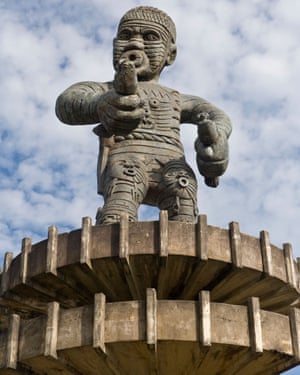
A statue of Cuffy, the slave rebellion leader, in Georgetown, Guyana. Photograph: Krystyna Szulecka/Alamy
I tell her about Cromarty and she laughs at the pronunciation of a well-known place from her childhood, near Cotton Tree in Berbice. “You know Aunty Florence’s mother, Big Mama, was half-Scottish,” she says. “We all used to wonder why she was so white and so much bigger than us, but then one day Granny told us that her father was a Scotsman.”
She then recalls a troubling story. “Granny said that the Indian women would be working out in the rice fields and it was then that most of the rapes would take place. No one would hear them scream … it was only nine months later that they had to deal with the consequences.”
The Baillies were part of an Inverness network of Scots, including the Frasers, the Inglis family and the Chisholms, who had substantial plantation interests in Guyana. However, slave ownership wasn’t confined to the wealthy: ordinary working people had a chance to buy slaves too. Alston has compiled a comprehensive index of more than 600 people from the Highlands with connections to Guyana before emancipation.
He says: “Guyana offered some the prospect of making a fortune, even for those of limited means, if they were prepared to start work as clerks, overseers and tradesmen. The key to success was to own slaves.”
Alston explains: “It was a weird accident that so many people from the Highlands went over. Plantations employed all sorts of people: carpenters, gardeners, bookkeepers and doctors were needed. Scotland had a good education system and the population was mobile. Tacksman [prinicipal tenants in Highlands after landowners] led immigrations and looked for opportunities.”
Despite Guyana’s distance and dangers (many Scots succumbed to yellow fever), the reward was seen as worth the risk. The benefits were many, there were people returning from Guyana buying land and estates and improving farms in Scotland, and the plantation economy also fired industrial wealth.
Alston states: “The livelihoods of some of the poorest people in Cromarty depended on what was going on in the Caribbean. There is a red sandstone building near the harbour which was established in the 1770s as a proto-factory: it imported hemp from St Petersburg and employed 250 people and 600 out-workers – more than the population of Cromarty now – to produce cloth to make bags and sacks for West Indian goods.”
The economic benefits of slavery had a trickle-down effect on every part of the Scottish economy: there was a boom in herring fishing in the Highland lochs, as this salted-down fish was a major export to the Caribbean as a protein-rich source of slave nutrition. Similarly, in the Outer Hebrides, many workers were employed in the manufacture of rough linen, known as slave cloth, for export to the colonies. In fact, Cromarty profited so much from the slave trade, it was one of the towns that petitioned against its abolition.
Highlanders also have the dubious accolade of pioneering the first shiploads of Indian indentured labourers to Guyana shortly after the abolition of slavery. John Gladstone (a Guyanese planter and father of the future British prime minister, who received £106,769 in compensation, the equivalent of about £9m today) wrote to Francis Mackenzie Gillanders of Gillanders, Arbuthnot & Co in Calcutta, requesting a new source of cheap and easily controlled labour.
Gillanders had already sent Indians to Mauritius under five-year contracts and was keen to fulfil Gladstone’s request. He perceived no difficulty with the new recruits, declaring they have “few wants beyond eating, sleeping and drinking”, referring to the “hill coolies of India” as “more akin to the monkey than the man”, unaware of “the place they agree to go to or the voyage they are undertaking”.
The arrival of the ships Whitby and Hesperus in Guyana in 1838 would herald the movement of more than half a million Indians to the Caribbean to work under overseers in the sweltering plantations, until the end of the practice in 1917.
What is shocking, given the extent of the involvement of Highland Scots in the history of Guyana, is the way their role has been airbrushed from history. Not many Scottish people would have a clue where Guyana is or of its importance to their own nation’s industrial growth.
Scots have been portrayed as abolitionists, reformers and liberal champions, so David Livingstone is remembered fondly, as is Scotland’s role in abolition, while the slave-owning firms of Sandbach Tinne, John Gladstone, HD and JE Baillie, CW&F Shand, Reid Irving and others are referred to euphemistically as “West Indian merchants”.
Unlike in Liverpool, Bristol or London, there is little acknowledgment in Glasgow of public buildings funded by the slave trade. Buchanan Street, Glassford Street and Ingram Street are named after notorious slavers, but there is no mention of this in the city’s history.
“The research I was doing in the 1990s felt very lonely,” says Alston. He recalls the opening of the National Museum of Scotland in 1998. “Despite huge sections devoted to Scotland and the world, there was not a mention of the slave trade or the slave-based plantation economies, which supported the rise of Scotland’s industrialisation. The story sits very uncomfortably with the narrative that people want to tell about Scotland and Highlanders.”
Alston explains that Scotland’s own historical grievances, specifically the Highland clearances (when tens of thousands of Highlanders were forcibly evicted from their homes to make way for large-scale sheep farming), make it unable to confront the past. He says: “If you want to portray yourself as a victim, the last thing you want to do is be the victimiser, and it is difficult for that to change because it is so embedded in the Scottish view of itself and the Highlands view of itself.
Cromarty graveyard in the Highlands, where some Scottish slave owners are buried. Photograph: Calum Davidson/Alamy
“In Sutherland county there is a memorial to the clearances funded by a Canadian whose ancestors were cleared [the Emigrants Statue]. The tone on the inscription is very much that the Scots enlightened the world. There was talk of putting replica statues up in all the places that Scots went to … I wonder if they will put one up in Georgetown, Guyana.”
Helen Cameron, who now lives in Australia, visited both Cromarty and Guyana in an attempt to trace her roots. Helen is related to the Camerons of Glen Nevis: John Cameron, her great, great, great-grandfather, came to Berbice in the early 1800s and set up a plantation with his kinsman Donald Charles Cameron. Accounts of their time there include shipments of coffee, cotton, rum and sugar, and the sale and hire of slaves. John Cameron had a relationship with Elizabeth Sharpe, “a free coloured woman” (a descendant of slaves) and they had seven children. The couple’s five sons all emigrated to Australia, while the daughters remained unmarried.
Helen writes by email: “It will seem strange that I did not make the intellectual connection of being a descendant of a plantation owner as also being a descendant of a slave owner. I was slightly taken aback when the manager of the hotel where we stayed in Guyana said, ‘This is the first time I have met the descendant of a slave owner.’”
She continues: “I had known that the family had plantations, but I do confess that until this research I had not considered who actually worked these plantations. I was also ignorant of Britain’s dependence on slavery.
“I hope my ancestors were benevolent slave owners,” she writes. “I do not like to think they were inhumane, even though, as one person in Guyana said, ‘Why would you think otherwise?’”
Scotland’s role in empire does not belong in the margins or footnotes: Highland Scots had a huge role to play in the large-scale trafficking of human beings for profit. I believe that however unpalatable this history is, it is a shared one, and contributes to our understanding of race and how the movements of people from long ago fits with our story now. To obscure these facts is to rob individuals of their stories all over again, and to deny them any sense of belonging or place in the world.
Today, steps are being made to acknowledge Scotland’s slaving past: there is a campaign to establish a museum of slavery, and for memorials and plaques to go up across the country on statues, streets and homes linked to the slave trade. In September 2018, Glasgow University published a report revealing that the institution benefited directly from the slave trade, despite its leading role in the abolitionist movement – receiving bequests of almost £200m in today’s money. The university has now launched a “reparative justice programme” that will involve the creation of a centre for the study of slavery as well as a collaboration with the University of the West Indies.
In Cromarty’s graveyard, the mid-morning sun slants across the gravestones pockmarked with moss and lichen, illuminating the faint inscriptions. The statue of Hugh Miller, the town’s famed geologist and writer, perched Nelson-like on a high column, overlooks the scene. I read the carved words on one crumbling grey stone that has sat in this cemetery for more than 150 years. It says: “John Munro late of Demerara.” Less clear is “Berbice” on another stone. A mere 20 miles south-west of this cemetery, at Gilchrist near Muir of Ord, is an ornate mausoleum containing the well-preserved tomb of Gillanders – he of the famous monkey quote. One truth remains: however hard we try to cover over our past, it rarely stays buried.
“In Sutherland county there is a memorial to the clearances funded by a Canadian whose ancestors were cleared [the Emigrants Statue]. The tone on the inscription is very much that the Scots enlightened the world. There was talk of putting replica statues up in all the places that Scots went to … I wonder if they will put one up in Georgetown, Guyana.”
Helen Cameron, who now lives in Australia, visited both Cromarty and Guyana in an attempt to trace her roots. Helen is related to the Camerons of Glen Nevis: John Cameron, her great, great, great-grandfather, came to Berbice in the early 1800s and set up a plantation with his kinsman Donald Charles Cameron. Accounts of their time there include shipments of coffee, cotton, rum and sugar, and the sale and hire of slaves. John Cameron had a relationship with Elizabeth Sharpe, “a free coloured woman” (a descendant of slaves) and they had seven children. The couple’s five sons all emigrated to Australia, while the daughters remained unmarried.
Helen writes by email: “It will seem strange that I did not make the intellectual connection of being a descendant of a plantation owner as also being a descendant of a slave owner. I was slightly taken aback when the manager of the hotel where we stayed in Guyana said, ‘This is the first time I have met the descendant of a slave owner.’”
She continues: “I had known that the family had plantations, but I do confess that until this research I had not considered who actually worked these plantations. I was also ignorant of Britain’s dependence on slavery.
“I hope my ancestors were benevolent slave owners,” she writes. “I do not like to think they were inhumane, even though, as one person in Guyana said, ‘Why would you think otherwise?’”
Scotland’s role in empire does not belong in the margins or footnotes: Highland Scots had a huge role to play in the large-scale trafficking of human beings for profit. I believe that however unpalatable this history is, it is a shared one, and contributes to our understanding of race and how the movements of people from long ago fits with our story now. To obscure these facts is to rob individuals of their stories all over again, and to deny them any sense of belonging or place in the world.
Today, steps are being made to acknowledge Scotland’s slaving past: there is a campaign to establish a museum of slavery, and for memorials and plaques to go up across the country on statues, streets and homes linked to the slave trade. In September 2018, Glasgow University published a report revealing that the institution benefited directly from the slave trade, despite its leading role in the abolitionist movement – receiving bequests of almost £200m in today’s money. The university has now launched a “reparative justice programme” that will involve the creation of a centre for the study of slavery as well as a collaboration with the University of the West Indies.
In Cromarty’s graveyard, the mid-morning sun slants across the gravestones pockmarked with moss and lichen, illuminating the faint inscriptions. The statue of Hugh Miller, the town’s famed geologist and writer, perched Nelson-like on a high column, overlooks the scene. I read the carved words on one crumbling grey stone that has sat in this cemetery for more than 150 years. It says: “John Munro late of Demerara.” Less clear is “Berbice” on another stone. A mere 20 miles south-west of this cemetery, at Gilchrist near Muir of Ord, is an ornate mausoleum containing the well-preserved tomb of Gillanders – he of the famous monkey quote. One truth remains: however hard we try to cover over our past, it rarely stays buried.




